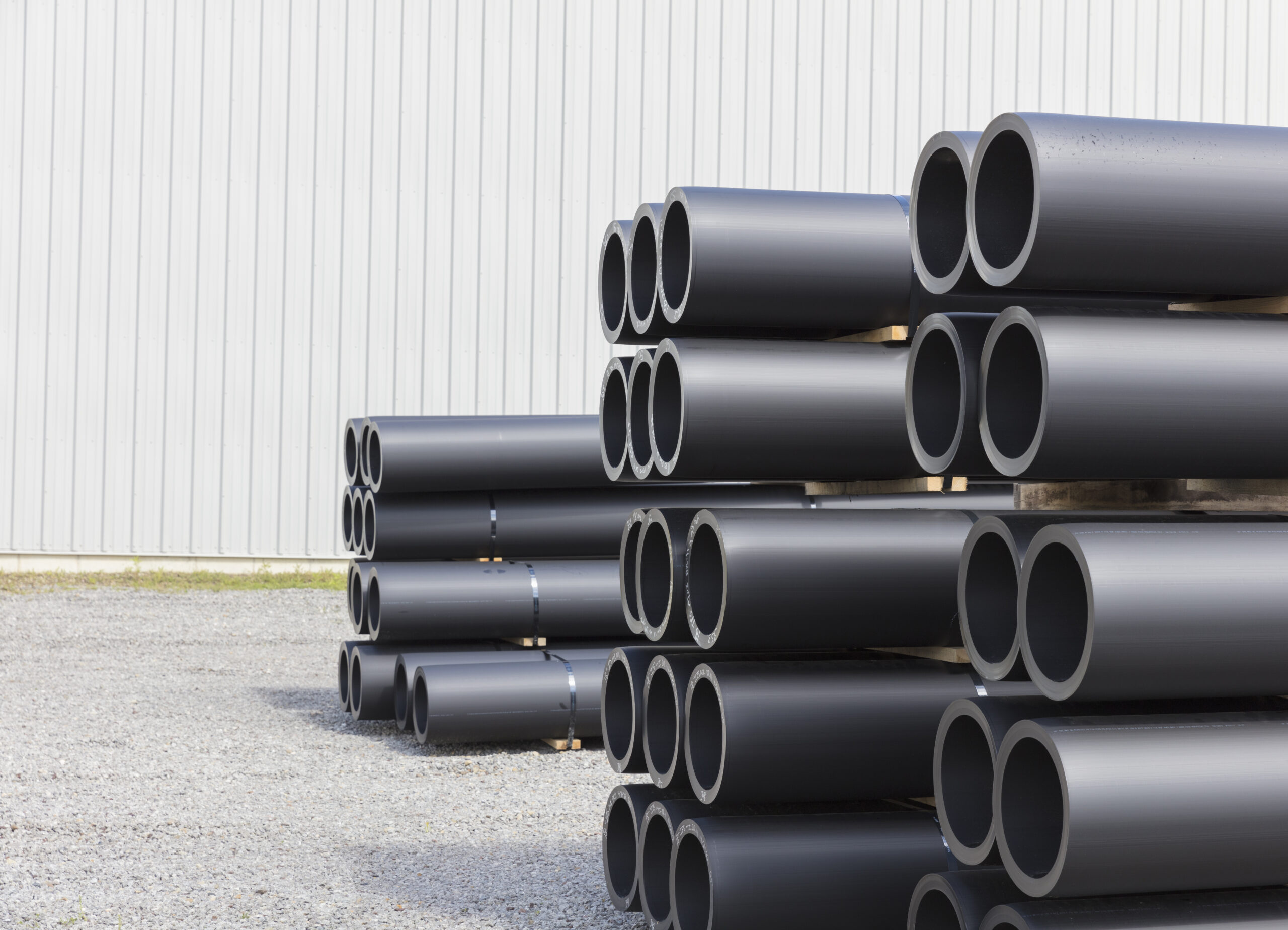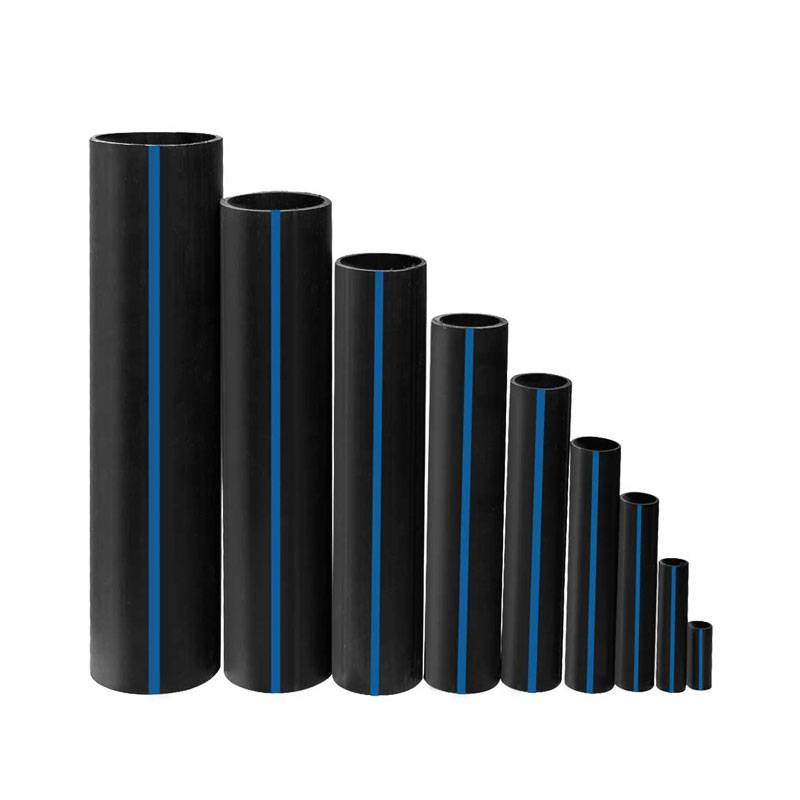Check Out the Manufacturing Process Behind High-Quality HDPE Pipeline and Its Applications
The production procedure of top notch HDPE pipelines is detailed and systematic. It begins with the choice of resources that boost efficiency. Following this, ethylene undertakes polymerization to create resin, which is then shaped with extrusion. Quality assurance is paramount, making sure that the end product meets rigid criteria. However, the trip of HDPE pipes does not finish with manufacturing. Their applications across various industries reveal a more comprehensive value worth examining.
Understanding HDPE: Residences and Advantages

High-density polyethylene (HDPE) is a versatile polycarbonate recognized for its toughness and resistance to different environmental factors. This material displays excellent tensile toughness, making it suitable for requiring applications. Its low-density structure adds to a lightweight item, assisting in ease of managing and installation. HDPE additionally showcases amazing resistance to chemicals, which decreases deterioration when revealed to severe compounds.
The product's low dampness absorption further improves its longevity, making it suitable for use in pipelines and storage space tanks. Additionally, HDPE is immune to ultraviolet (UV) radiation, guaranteeing that items maintain their stability even when subjected to sunshine. Additionally, its flexibility permits the production of complex shapes without compromising toughness. The green nature of HDPE, typically stemmed from recycled products, includes in its appeal, advertising sustainable practices in manufacturing. Generally, these homes and advantages make HDPE a favored selection for various industrial and consumer applications.
Resources Selection for HDPE Production
The selection of basic materials for HDPE manufacturing is important to confirm the final item fulfills the wanted requirements and top quality criteria. High-density polyethylene (HDPE) is mostly created from polymerized ethylene, obtained from nonrenewable fuel sources such as gas or crude oil. The top quality of these feedstocks greatly affects the mechanical and thermal properties of the last HDPE.
Ingredients likewise play a significant role in boosting HDPE's efficiency, including antioxidants, UV stabilizers, and colorants, which boost durability and resistance to ecological aspects. The choice process need to take into consideration not only the chemical structure of the raw materials but also their handling attributes to guarantee reliable manufacturing.
The sourcing of raw materials need to prioritize sustainability and conformity with environmental laws, as responsible techniques are crucial in today's market. Ultimately, cautious basic material choice lays the structure for generating premium HDPE pipelines suitable for diverse applications.
The Extrusion Refine: Shaping HDPE Pipe
The extrusion procedure plays a vital function in shaping HDPE pipes, starting with precise product preparation methods that assure perfect flow and uniformity. Just as essential is the style of the die, which straight affects the final measurements and surface area quality of the pipe. Together, these aspects add considerably to the performance and quality of HDPE pipe production.
Material Preparation Techniques
Effective manufacturing of HDPE pipelines begins with precise product prep work strategies, especially the extrusion procedure. Throughout this phase, high-density polyethylene material is initial dried out to remove dampness, ensuring optimal circulation attributes. The material is after that fed right into the extruder, where it undertakes home heating and melting, changing into a viscous state. This heating process is carefully controlled to keep the product's stability and performance. The molten HDPE is compelled with a die, shaping it into a continuous pipeline type. Appropriate temperature management throughout extrusion is crucial, as it straight impacts the material's residential properties and the final product top quality. As soon as shaped, the HDPE pipe is cooled down and cut to specified sizes, prepared for subsequent handling and applications.
Die Design Importance
Accuracy in die style plays a vital role in the extrusion procedure of HDPE pipelines. The die serves as the final shaping device, directly affecting the pipe's dimensions, wall surface thickness, and surface area finish. A properly designed die assurances uniform product flow, minimizing problems such as abnormalities and vulnerable points. The geometry of the die need to be optimized to fit the specific buildings of HDPE, including its viscosity and thermal actions during extrusion. In addition, the cooling rate of the material as it goes through the die can significantly influence the pipe's structural honesty. As a result, buying advanced die technology is important for suppliers aiming to create top quality HDPE pipes that satisfy market criteria and customer expectations.
Quality Control Actions in HDPE Manufacturing
Various elements affect the quality of HDPE pipe manufacturing, efficient quality control measures are vital to guarantee uniformity and reliability in the last product (Pipe Supplier American Plastics Midland). Secret quality assurance techniques consist of rigorous product evaluation, verifying that the raw polyethylene satisfies well-known requirements for pureness and thickness. Throughout the extrusion procedure, criteria such as temperature, stress, and cooling time are closely kept track of to preserve dimensional accuracy and architectural integrity
Additionally, post-production testing is necessary; makers typically conduct hydrostatic examinations to evaluate the pipeline's stamina and resistance to pressure. Visual inspections for surface area problems further improve quality control. Certification from pertinent requirements organizations, like ASTM or ISO, supplies an additional layer of integrity. By carrying out these extensive quality assurance measures, manufacturers can reduce issues, enhance efficiency, and ensure that the HDPE pipelines fulfill the particular needs of various applications, eventually leading to client complete satisfaction and rely on the product.
Applications of HDPE Pipe Throughout Industries
HDPE pipelines are utilized across different fields due to their toughness and adaptability. In water distribution systems, they ensure reliable distribution, while in wastewater monitoring, they provide trustworthy solutions for waste transport. Additionally, agricultural irrigation networks benefit from HDPE's resistance to rust and versatility, making it an excellent selection for modern farming practices.

Water Distribution Solutions
A significant number of sectors rely upon high-density polyethylene (HDPE) pipes for effective water circulation systems. Recognized for their resilience and resistance to rust, HDPE pipelines are extensively utilized in community water system networks, farming watering, and commercial applications. Their light-weight nature facilitates simple handling and setup, minimizing labor prices and time. In addition, HDPE pipelines can accommodate various pressure levels, making them suitable for both low and high-pressure systems. hdpe pipe fittings Midland TX. The versatility of the material enables seamless combination into existing infrastructure, reducing the need for comprehensive excavation. HDPE's resistance to chemical seeping guarantees that the water provided continues to be secure and clean, making it an excellent choice for preserving the top quality of potable water across different fields.
Wastewater Management Solutions
Efficient water circulation systems additionally pave the way for ingenious wastewater monitoring remedies, where high-density polyethylene (HDPE) pipes play a significant function. Distinguished for their durability and resistance to corrosion, HDPE pipelines are ideal for carrying wastewater in different setups. Their adaptability permits very easy installment in complex environments, minimizing the need for comprehensive excavation. Furthermore, HDPE's smooth interior surface decreases friction, improving flow rates and efficiency. These pipes are also resistant to chemical leaching, ensuring that contaminants do not compromise the surrounding environment. Industries, towns, and treatment read more facilities increasingly rely upon HDPE pipelines for their integrity and long life, making them a recommended selection for modern-day wastewater monitoring systems. This versatility highlights the important value of HDPE pipes across various applications.
Agricultural Irrigation Networks
Agricultural irrigation networks profit substantially from the usage of high-density polyethylene (HDPE) pipes, which offer effective and reputable water delivery to plants. HDPE pipes are lightweight, making them easy to move and mount, while their flexibility enables different configurations in varied terrains. These pipelines demonstrate superb resistance to rust, chemicals, and UV radiation, ensuring durability in rough agricultural settings. Additionally, their smooth indoor surface lessens friction loss, maximizing water flow and minimizing energy expenses related to pumping. The durability of HDPE pipelines, typically going beyond 50 years, adds to lower maintenance and substitute expenditures. As a result, farmers significantly rely upon HDPE pipelines to enhance watering efficiency and promote lasting farming practices, eventually leading to boosted crop yields and source preservation.
Future Patterns in HDPE Pipeline Technology
As the need for lasting and efficient facilities expands, developments in HDPE pipeline modern technology are poised to transform numerous markets. Emerging patterns consist of the assimilation of clever innovations, such as sensors and IoT abilities, which facilitate real-time tracking of pipeline problems, reducing maintenance costs and protecting against leaks. Additionally, the advancement of sophisticated production techniques, such as 3D printing, is making it possible for the manufacturing of complex, customized pipe styles that satisfy details task needs.
The focus on recycling and round economic climate methods is driving the advancement of HDPE pipelines made from recycled materials, improving sustainability. Enhanced jointing techniques, such as electro-fusion and mechanical fittings, are also improving installment performance and integrity. The growing emphasis on ecological guidelines is pushing manufacturers to take on greener production processes, making certain that HDPE pipes not only satisfy industry criteria however also promote a more lasting future for infrastructure growth.
Frequently Asked Inquiries
Just How Does HDPE Compare to Various Other Plastic Materials?
HDPE outperforms several other plastic products concerning durability, chemical resistance, and versatility. Its low thickness and high tensile strength make it perfect for numerous applications, usually exceeding choices in both performance and durability.
What Are the Ecological Impacts of HDPE Manufacturing?
The ecological impacts of HDPE production consist of greenhouse gas emissions, energy usage, and possible pollution from producing procedures. Additionally, incorrect disposal can lead to soil and water contamination, increasing problems about long-lasting environmental results.
Can HDPE Pipes Be Recycled?
Yes, HDPE pipes can be recycled. Lots of centers approve made use of HDPE for processing, transforming it into new items. This reusing contributes to sustainability efforts, minimizing plastic waste while conserving resources and energy in the manufacturing cycle.
What Is the Life Expectancy of HDPE Piping?

Just How Do Temperature Level Variations Affect HDPE Pipe Efficiency?
Temperature level variants greatly affect HDPE pipeline efficiency, influencing adaptability and strength. High temperatures can result in softening, while low temperatures may trigger brittleness, eventually influencing the pipe's durability and viability for numerous applications in varied atmospheres.